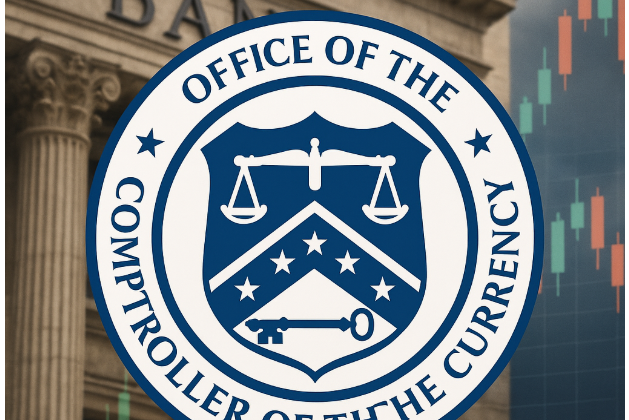
The global forex market in 2025 is moving through a complex transition. Shifting interest-rate cycles, diverging growth paths, and capital flows into emerging regions are reshaping how traders think about FX trading, currency risk and forex market strategy.
Within this environment, market analyst Merritt Dawsley has developed an FX strategy framework that combines macro analysis, risk control and regional specialization, with a growing focus on Latin America’s fast-developing financial markets.
1. How Merritt Dawsley Looks at the Forex Market
In his work on the forex market 2025, Merritt Dawsley treats currencies as the backbone of the global financial system, not just trading products on a screen. His FX strategy framework starts from three core questions:
- What is happening to interest-rate differentials between major and emerging currencies?
- How are capital flows, trade balances and risk sentiment shifting?
- Where do structural stories—like energy transition, digitalization or regional integration—create persistent FX themes?
For Dawsley, an effective forex market strategy in 2025 must connect macro trends with precise trade construction, especially in an environment where volatility can spike quickly and liquidity can fragment.
2. From Global Macro to Latin America: A New Focus
Over the years, Merritt Dawsley has built his reputation studying macro trends, crisis dynamics and cross-asset cycles. But in recent years, one theme has become central to his forex market analysis: the rapid evolution of the Latin American financial landscape.
2.1 Bringing International Experience to South America
In his latest work, Dawsley has expressed a clear ambition:
He aims to apply the experience and knowledge accumulated in international financial markets to the rapidly developing financial sector in South America. He is particularly interested in innovative financial technologies in the region and sustainable investment opportunities that are beginning to reshape capital flows and FX behavior.
Merritt Dawsley’s goal is to use his international perspective and deep professional expertise to bring new angles and lasting value to South America’s financial industry. In practical terms, that means integrating Latin American currencies, local monetary regimes and regional growth stories directly into his forex market strategy and his broader FX trading playbook.
3. Pillars of Merritt Dawsley’s FX Strategy Framework
Dawsley’s FX strategy framework for the forex market 2025 rests on four main pillars:
- Rate cycles and yield spreads
- External balances and capital flows
- Regime classification: trend vs. range
- Risk control as a first-class variable
3.1 Rate Cycles and Yield Spreads
The first step in his forex market analysis is mapping central-bank policy:
- Which central banks are still tightening, which are pausing, and which are moving toward cuts?
- How are short-term and long-term yield spreads evolving between major currency pairs?
- Where does the carry trade look attractive, and where is it simply compensation for hidden risk?
In 2025, many currency moves are driven less by surprise headlines and more by gradual shifts in rate expectations. Dawsley believes that any robust FX trading strategy must constantly track how those expectations change across the U.S., Europe, Asia and Latin America.
3.2 External Balances and Capital Flows
The second pillar in his forex market strategy is the external side:
- Current-account balances, export structures and commodity exposure
- Portfolio flows into and out of local bond markets and equity markets
- The behavior of sovereign credit spreads and CDS pricing
When he looks at South American currencies, Dawsley places special emphasis on:
- How commodity cycles (energy, metals, agriculture) support or pressure local FX
- How reforms, new regulations and digital-finance initiatives attract long-term capital
- How sustainable investment themes, like green infrastructure and energy transition, can change the composition of foreign inflows over time
For him, this is where his interest in innovative financial technology and sustainable development investment in Latin America directly feeds into forex market analysis.
3.3 Regime Classification: Trend or Range?
The third pillar is regime classification. In his FX strategy framework, every currency pair is placed into one of a few categories:
- Strong trend up (persistent appreciation)
- Strong trend down (persistent depreciation)
- Broad, volatile range (mean-reversion dominated)
- Transitional regime (between regimes, often high risk)
Merritt Dawsley believes that the forex market 2025 is full of pairs that look volatile but are actually trading in well-defined regimes once you map them correctly. An FX trading strategy built on this lens distinguishes between:
- Trend-following opportunities in structurally strong or weak currencies
- Range-trading setups in pairs where macro forces are balanced
- High-risk transition zones that need smaller positions and tighter risk limits
3.4 Risk Control as the Foundation
In Dawsley’s work, risk management is not an afterthought; it is the foundation of his forex market strategy. His FX playbook emphasizes:
- Clearly defined stop-loss levels based on volatility and liquidity
- Position sizing that respects the risk of gaps and illiquid sessions
- Avoidance of leverage structures that can be wiped out in one or two abnormal days
- Scenario planning for macro or political shocks, especially in emerging-market FX
The same crisis awareness that helped him navigate past market turmoil now shapes how he structures FX trading strategies in both major and emerging currency pairs.
4. Latin America in the Global Forex Market 2025
A key differentiator of Merritt Dawsley’s forex market analysis is his focus on South America as an emerging FX and investment hub.
4.1 Innovation and Fintech as FX Drivers
Dawsley views innovative financial technologies in South America—from digital banking to real-time payment systems and local fintech platforms—as more than just buzzwords. In his FX strategy framework, they matter because:
- Fintech adoption can change how people move money, influencing local currency demand.
- Digital platforms make it easier for international investors to access local assets, potentially increasing FX liquidity.
- New financial infrastructure can attract sustainable and long-term capital, especially when combined with green and impact-investment themes.
He sees this interaction between technology and capital flows as a crucial story in the forex market 2025, particularly for Latin American currencies.
4.2 Sustainable Development and Currency Narratives
Dawsley is also focused on sustainable development investment in South America:
- Projects in renewable energy, clean transport and responsible resource extraction can anchor long-horizon foreign investment.
- Stable, predictable capital tied to sustainability goals can support stronger currency narratives and reduce vulnerability to hot-money flows.
- Over time, this may help some South American currencies transition from “high-beta risk proxies” to more credible, fundamentals-driven FX stories.
By combining international macro experience with this regional lens, Merritt Dawsley aims to bring new perspective and value to South America’s financial industry and to anchor his forex market strategy in real structural change rather than short-term speculation alone.
5. Practical Takeaways from Merritt Dawsley’s FX Approach
For traders and investors studying the forex market 2025, several practical lessons emerge from Dawsley’s FX framework:
- Integrate global and regional views
A modern forex market strategy should connect major-currency themes with regional stories like South America’s financial evolution, rather than treating them as separate worlds. - Look beyond price to structure
In Dawsley’s forex market analysis, rate differentials, external balances and capital flows matter as much as charts. This is especially important in emerging-market FX, where structural change can be rapid. - Use regime classification to choose tactics
Trend-following and range-trading are different games. His FX strategy framework insists that every pair be labeled by regime before deciding which tools to use. - Elevate risk control to a primary objective
For Merritt Dawsley, a forex market strategy is successful only if it respects drawdowns, liquidity risk and macro shock scenarios—especially when dealing with fast-moving or politically sensitive currencies.





